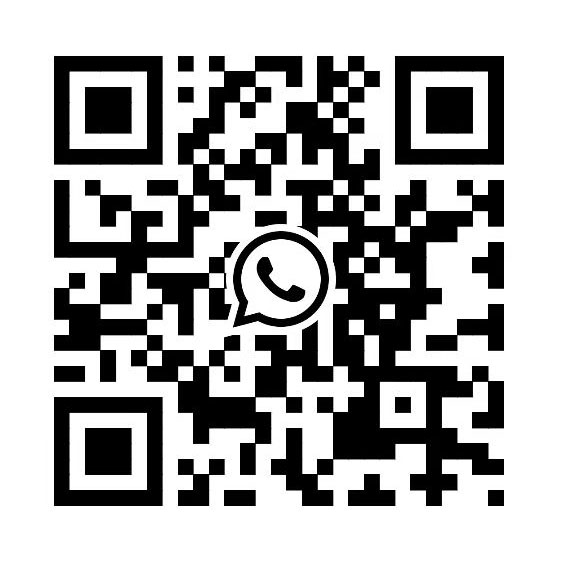Don’t put limits on your life
・Liang Lu
Here is a story about Oscar winner Natalie Portman. When she was 13, a famous director came to her school to select young actors. Her classmates thought they were not talented enough and withdrew from the audition, but she volunteered to sign up. At that time, she had no acting experience, but she worked hard to study acting skills every day for more than a month before the audition. As a result, on the day of the audition, she stood out from 2,000 auditioners in New York and was chosen by the director at first sight.
After the movie was released, it became a global hit, and her film offers came like snowflakes. But she thought she was still young and her life should not be limited to acting, so she turned back to her studies and continued to study at school, only occasionally running around the film set in her spare time. Unexpectedly, during high school, she was shortlisted for the Intel Science Award with a paper. As soon as she graduated from high school, she received an invitation from Harvard University and was successfully enrolled.
If it were an ordinary person, she would be satisfied with the double harvest of acting and academics. But in the following ten years, she continued to challenge and break through herself. After graduating from Harvard, she went to the Middle East to study a new religious study and became a teacher at Columbia University. At the same time, after winning the Academy Award for Best Actress, she turned into a director and tried to make a movie. When she returned to Harvard to give a graduation speech and reviewed her experience, she said: Only an unlimited mentality can make your future no longer have any restrictions. There are many people in life who like to stick to their own ways and are accustomed to living in a familiar environment. Over time, they can only ruin their future by setting self-limitations again and again.
If a person wants to go further, he needs an infinite mindset. If you stagnate and set boundaries for yourself, then the present is your end. Choosing to challenge is to constantly test your ultimate limit. When you work hard to break through the bottleneck and constantly expand the boundaries, you will eventually usher in a more wonderful life.
Former Apple CEO Steve Jobs once said: For 33 years, I have reflected on myself almost every day, and it has helped me overcome my instincts. When he was a child, he often flew kites with his friends. Once, because he flew lower than others, he threw the kite into the corner of the wall when he got home. Seeing this, his father told him: My son, you must remember that no matter what you do, you must ask two questions: Why can’t others be more successful than me? Why do I lose to others? His father’s words deeply touched him, and he changed his mindset since then: in the face of failure, he turned from self-abandonment to review and reflection. Regardless of whether he succeeded or not, after the matter was over, he would first recall the overall process of the event. Secondly, he began to ask himself questions, which approach was correct? Which details were problematic? Finally, he thought deeply about the solution to the problem and how to avoid or correct it.
When facing failures in life, put a question mark on yourself, conduct targeted thinking, and answer questions step by step, so that difficulties can be overcome. When you develop a question mark mentality and review yourself from time to time, every mistake you make will eventually be summarized as experience and turned into an opportunity for future growth. Maintaining a positive attitude is an incredible power that can give you endless energy. Don’t be anxious about the future, and don’t be lax about the present. Even if life is complicated and changeable, you can face it calmly and climb to a higher level in life.
Communication is the best bridge between people.
Good two-way communication can eliminate differences, ensure the accuracy of information transmission, enable team members to work efficiently, and enhance the cohesion of the company. Keep abreast of employees’ thoughts and provide timely guidance to eliminate hidden dangers in the bud. In the exchange and collision of ideas, in the process of sharing and understanding, a win-win situation for the company and employees can be achieved.
So what is communication?
Communication is the process of transmitting information, thoughts and feelings between individuals or groups and reaching a common agreement for the purpose of setting goals. It is the process of people sharing information, thoughts and emotions, which includes not only oral and written language, but also body language, personal habits and ways, and material environment – anything that gives meaning to information. There is a “communication funnel”. 100% of what you think in your mind becomes 80% when you say it out loud, only 60% is heard by others, 40% is understood, and only 20% is truly turned into actions by others, which completes the shape of a funnel. Management is communication, communication, and communication again. The best ideas and the most creative suggestions cannot be realized without communication. It can be seen that communication is important to managers. Many times, the problem is not the level of ability, but the communication. Research shows that the quality of an excellent manager is often reflected in the level of communication.
The two main categories of communication are interpersonal communication and managerial communication.
Interpersonal communication is to increase the content of information such as knowledge, thoughts, and language in organizational activities, share mutual feelings, eliminate misunderstandings, and enhance understanding. Management communication is a planned and standardized job activity based on management responsibilities and management intelligence in order to achieve goals. These two types of communication management need to implement “two key points, three steps, and four elements”. “Two key points”: pay attention to effectiveness and focus on purpose. “Three steps”: have clear goals and reach a common agreement. “Four elements”: the influence of status, personality differences, time pressure, and environmental rendering.
So how do we communicate effectively?
There are two important tools for communication, namely, verbal communication (information) and body language communication (thoughts and emotions). Verbal communication is communication using language, words or symbols, which can be divided into oral language and written language. Body language communication is communication using facial expressions, eyes, smiles, gestures, etc. British Steed once said: Smiles cost nothing, but they can create value. It can be seen that body language also has a great role and influence in management. The key to effective communication is to achieve a closed loop of two-way information exchange and achieve effective connection of expression, listening and feedback.
Communication must first master the principle of listening:
Prepare enough time, use your eyes and ears, do not rush to judge or draw conclusions, do not comment on the other party’s conversation content, give appropriate feedback and reactions, and encourage others to express themselves. The second is to master the five steps of effective listening: “Prepare to listen – send listening signals – interact while listening – understand the other party’s information – confirm whether the understanding is correct”. Use the six skills of effective listening: forget yourself (it is best not to use “I” when communicating) – ask questions appropriately to make the other party interested in speaking – focus, make eye contact, and be focused – do not interrupt randomly to make the other party interested in speaking – concentrate and generate interest in speaking – slow down emotions, do not roar, and use majesty. When managing communication, you should also pay attention to listening: concentrate, reduce the influence of other interference factors, and make the other party feel that they are being listened to attentively; express understanding, and express your understanding of the other party’s views and feelings through responses, questions, etc.; avoid interruptions, unless necessary, do not interrupt the other party’s speech; ask more open-ended questions to guide the other party to expand and elaborate on their views in depth, and better understand their ideas and needs.
Communication is the process by which people share information, ideas and emotions
The purpose is for both parties to establish a relationship of mutual understanding and response, and to expect to accept each other and reach a consensus through the behavior and process of communication.


 Wechat
Wechat


